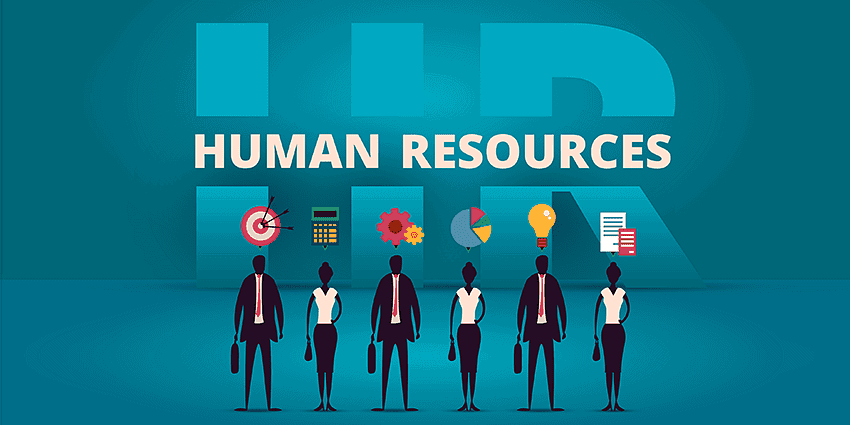Human Resource Assignment Help
Requirement of capabilities
HR professionals from every enterprise play a key part in assistance of the management team and leading it to the appropriate management method that is useful in supporting the organizational teams. Indeed, HR practitioners must not turn their consideration on enhancing organizational capability. HR professionals enable businesses to establish strategic advantages, and provide the business or the market with a desirable place for the enterprise. Thus it is exceptionally important for HR professionals to apprehend the market objectives, strategies and expectations. HR professionals must have at least three types of capabilities to know the professional demand, and these are business-driven, an expert practitioner, and a cultural and changes leader.
HR professional with “business-driven” capability will mean greater market productivity while capability likes “expert practitioner” will better determine organizational priorities, HR approaches, and enterprise objectives. HR capabilities of “a cultural and change leader” will require unity of organization in the cross-cultural setting of business.
-
Business Driven:
According to the AHRI, business-driven capabilities allow a manager to have a broad range of qualifications to tackle critical conditions, expertise and experience (Nankervis, Baird, Coffey & Shields, 2019). They will be able to grasp the organization’s goals for activities, goods and service delivery. They will be able to comprehend the business atmosphere of the company, including financial and operational performance and sometimes even stakeholders. They will also achieve consistent results for clients by employees and have significant advantage. This will be able to evaluate the implications of any and all political stances on companies. They try to compile, incorporate, interpret and systematically evaluate data so that they know what goods they may like to buy and which among the public will be their intended audience. A business-driven manager should react appropriately to internal and external factors as to how they impact the challenges to the workplace, sustainability, competitiveness and efficiency of the company (Hauke, Mayer, Quick & Feistenauer, 2013).
-
Expert Practitioner
According to the AHRI, an expert practitioner needs the skills to effectively do his job. Personal knowledge must be applied in HR, corporate and employee relations, governance, and other such domains (Nankervis et al., 2019). The responsibilities of HR expert practitioners vary significantly depending on the degree to which they are general practitioners (HR Director, HR Manager, business associate) or specialists (training and development executives, talent managers, incentive managers), the degree at which they operate (strategic, corporate or administrative), the needs of the business, the environment in which they operate as well as their own skills (Reilly & Williams, 2016). Roles can be constructive, responsive or a combination of the two. He will also build knowledge about how company is influenced by management decisions or policy decisions. He should understand his organization very well to know what their operational capacity is, and what professional HR support is required. They should be willing to contemplate and forecast the technical and global transitions and how their employees could be influenced.
-
Cultural and change leader
The AHRI mentions that cross-cultural comprehension is among the most important HR activities (Nankervis et al., 2019). Consequently, all organizations undergo periods of much-needed cultural shift to produce the results they need to improve, compete at the highest level. Modifying or strengthening a firm’s or team’s culture requires emphasis, consistency and integrity. And it has to be guided from the top. The desired culture could not be accomplished without complete and full participation of the senior management team. HR managers can promote progress by assisting corporate leaders in the business decisions of companies that contribute to the redefinition of institutions, community and vital partnerships within and outside the company (Uhl-Bien & Arena, 2018).
-
Analyzing the significance of stated capabilities for Human Resources Manager
Every organization’s success rely on the effectiveness of the HR professionals within the organization. HR professionals must have at least three basic skills and competencies that were addressed in the last section. It is necessary to comprehend why such skills and competencies are helpful to the human resources manager. Managers and supervisors serve the most essential role in the organization’s strategic growth. In addition HR hires new talent for the organization, to ensure that these organization methods are implemented as appropriate (Ulrich Broc, Kbank, Yeung & Lake, 1995). Moreover, human resources managers actively participate from the creation of the plan through to the implementation of each phase.
-
Business Driven
The important and significant skills that Human Resource Manager may have is to be business driven. This implies that the Human Resources Manager should have a clear view of the business and the interests of its stakeholders to be willing to establish a good connection with the organization and its stakeholders. The human resource manager need to be business driven; he does not rely on the requirement for an operational plan and the need of stakeholders. The fundamental distinction between efficient and ineffective organizations is that, in an efficient organization, human resources managers are business-driven, whereas the human resources manager of the ineffective organizations focuses just on the specific function of recruitment of employees (Bailey, Mankin, Kelliher & Garavan, 2018). Specifically, the business-driven competence of human resource managers is useful to maintain the prevailing competitive situation of any entire organization.
-
Expert Practitioner
Every human resources manager interacts with an organizationally complicated workplace environment and involves other professionals’ ability to perform any task. Building the potential of an experienced specialist allows the Human Resources Manager to handle the work on an individual basis. Getting the expertise of an experienced specialist will make it easier for the Human Resources Manager to help staff who is struggling with a complicated project. According to Brewster (2017), professionals are intended to assist employees in a challenging role and to guarantee that each team performs their work on time. Human Resource Manager, who is a professional, can also create or identify organizational objectives. Human Resource Managers benefit the company by improving employee management abilities through structural learning. In addition, the role undertaken by HR also requires the provision of professional interests of employees. While the advancement of expertise as a professional can enable human resources managers help businesses to accomplish their company objectives.
-
Cultural and change leader
Human Resource Managers face economic and social problems in the era of globalization, as they involve in activities with the people of diverse culture and different background context. This is the real challenge for HR managers to accomplish organizational unity without disrupting the performance. In addition, it is bringing more complexity to rising management patterns. The HR manager must therefore be able to improve his capability as a leader who can address change in the organization and handle cross-cultural workforce challenges. That is essential for HR managers who are ready to support their company in a steadily volatile market.
-
Role of these capabilities in practical and professional life
Managers are also seeking for HR to support business development. So, with skills which are more performance-oriented as described in previous section, an HR candidate is often a concern. In this section, I wanted to present how I acquired these basic three types of capabilities throughout my practical and professional understanding with my former job.
In a small start-up company I began my job as a HR manager. Nevertheless, a few minor obstacles, such as internal disputes between employees and defensiveness to adapt change, presented challenges to progress, have been an exceptional product line with broad market reach. I noticed that the company would not have a good connections with its both internal and external stakeholders as I entered the company, which causes serious conflict in the workplace environment of an organization. Therefore, the very first technique I have implemented consequently is to create a stronger connection between the company and stakeholders. I assured the participation and involvement from both management and workers during the implementation of a new policy to ensure that everybody was consistent with organizational developments.
Building my business strategy began by identifying the aims and objectives of the organization. According to Marchington, Wilkinson, Donnelly & Kynighou (2016) the organization’s objectives and strategies must be communicated to staff in order to achieve excellent performance. My simple notion was to ensure the workers consistent with the aims and goals of the organization. Yet I also need make sure I understand the workers’ needs as well. There were employees in the company with a diverse cultural context and they definitely do not comply with each other in several occasions. Thus, I required to determine certain HR policies and strategies that are much more result-oriented and have no unique cultural context. I need to guarantee that any time I can facilitate a business enterprise, whenever some professional advice is desired. Although the complexity of that company was very minimal so it allowed me to improve my ability as an expert practitioner to do well within the company. I learned throughout that period how necessary it is to establish those behaviors and capabilities that are critical to the organization’s progress and growth as an HR manager.
References
Bailey, C., Mankin, D., Kelliher, C. and Garavan, T., 2018. Strategic human resource management. Oxford University Press.
Brewster, C., 2017. The integration of human resource management and corporate strategy. Policy and practice in European human resource management, pp.22-35.
Hauke, J., Mayer, J.H., Quick, R. and Feistenauer, H., 2013, June. New-generation managers’ business/IT alignment perspective for a more business-driven is design. In International Conference on Business Information Systems (pp. 73-88). Springer, Berlin, Heidelberg.
Marchington, M., Wilkinson, A., Donnelly, R. and Kynighou, A., 2016. Human resource management at work. Kogan Page Publishers.
Nankervis, A., Baird, M., Coffey, J. and Shields, J., 2019. Human resource management. Cengage AU.
Reilly, P. and Williams, T., 2016. Strategic HR: Building the capability to deliver. CRC Press
Ulrich, D., Brockbank, W., Yeung, A.K. and Lake, D.G., 1995. Human resource competencies: An empirical assessment. Human resource management, 34(4), pp.473-495.
Uhl-Bien, M. and Arena, M., 2018. Leadership for organizational adaptability: A theoretical synthesis and integrative framework. The Leadership Quarterly, 29(1), pp.89-104.





